Ming: The Golden Empire on display at National Museum of Scotland
- Published
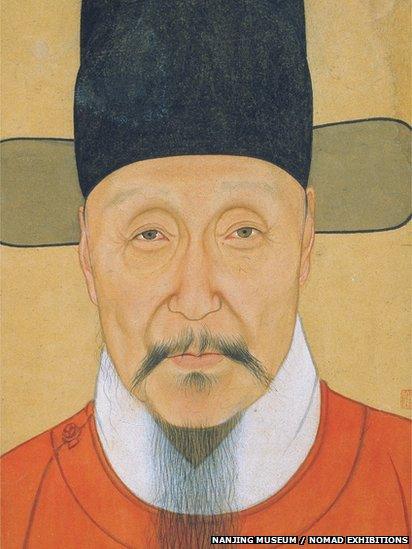
The collection from Nanjing Museum, including Chinese National Treasures, will be on display in the only UK showing of the exhibition. It opens on 27 June.
The Ming Dynasty, from 1368-1644, was a period marked by a social, cultural and economic transformation and a dramatic flourishing of the arts.
The exhibition includes an extraordinary collection of life-like portraits, showing the faces of some of the men at the top of the late Ming social order, the literati.
This is He Bin who served as a senior military commander during the Ming.

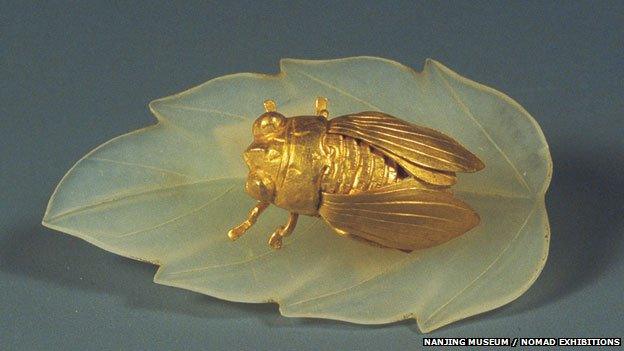
This golden cicada, a Chinese National Treasure, crafted out of gold and jade, is considered flawless.
In Classical Chinese, a play on words for the phrase golden cicada on a jade leaf (Jinchan Yuye) sounds like a compliment to a woman for her unsurpassed beauty.

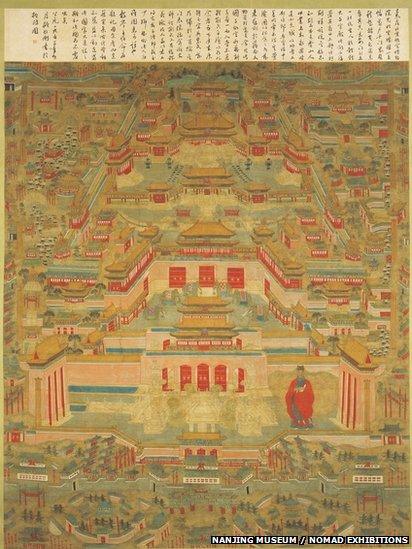
Nanjing was the birthplace of the Ming dynasty, its first capital before the creation of the Beijing palace complex, known as the Forbidden City.
This richly-coloured painting from the early Ming illustrates the symbolic grandeur and geometrical order of Beijing's newly-built Forbidden City.
It was to be the imperial seat for emperors and their households for the following five centuries, and was the world's largest palace complex.
The Forbidden City's chief architect, Kuai Xiang, is actually painted on - he stands in front of the Gate of Heavenly Peace.

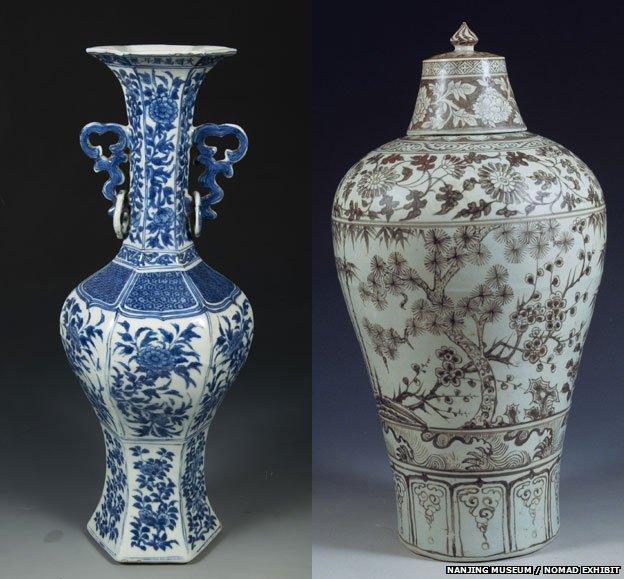
The Ming imperial court commanded the very finest materials and workmanship. This is revealed by exquisite imperial items and rare objects within the exhibition, including the iconic blue and white porcelain (above left) with which the Ming period is synonymous. It was far superior to anything that could be produced in Europe at that time.
Blue and white was actually one among many decorative treatments of Ming porcelain. Pictured above is a meiping (plum vase) jar from the Zhengtong emperor's reign (1435-1449). It features a copper red underglaze, a colour effect so difficult to achieve that it was considered especially suitable for elite use.

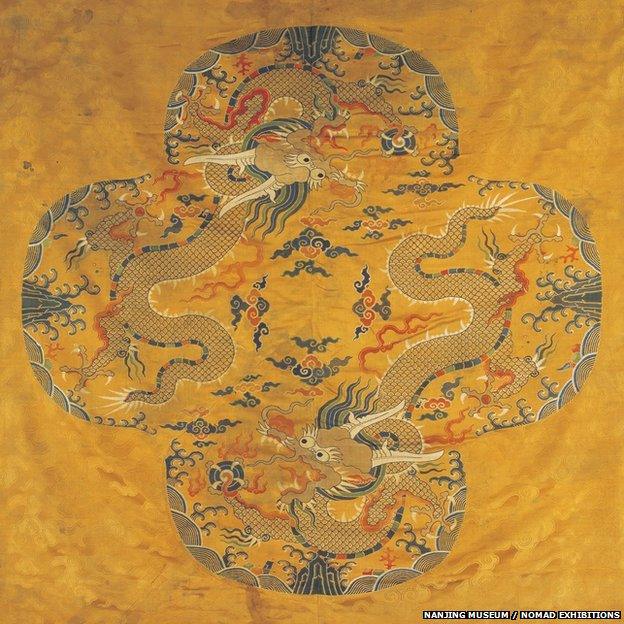
Also on display are sumptuous silk textiles, gold and jades, and rare examples of elaborately enamelled cloisonné.
This silk brocade features two Mang dragons.
Mang dragons are distinguished by having four-talon claws while imperial dragons have five-talon claws. Only the emperor could wear robes with five-clawed dragons.
Robes with mang dragons were worn by empresses, imperial concubines, or members of the Ming nobility.

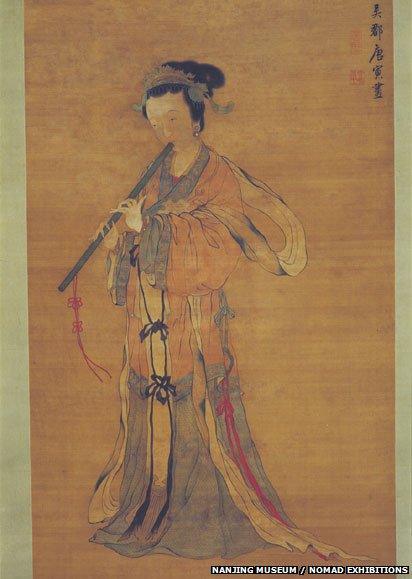
The exhibition not only examines the imperial court's influence on Ming culture, but also looks at the influence literati taste came to have on Ming culture.
Paintings on paper and silk, and calligraphy by the four Masters of Ming painting are on display.
This remarkable scroll showing a woman playing a flute - a Chinese National Treasure - was created by Tang Yin, one of the four Masters of Ming painting.

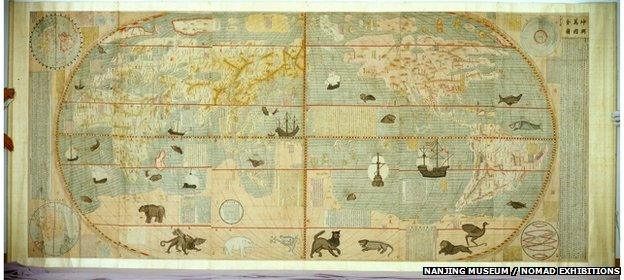
European influences began to impact on the Ming from the early 16th century, as a succession of Portuguese, Spanish and then Dutch merchant-adventurers arrived on Ming shores.
The most extraordinary of these men was the Italian, Matteo Ricci (1552-1610), the first European to visit the Forbidden City.
Ricci arrived in China in 1583 and was appointed an advisor to the imperial court in 1601.
This detailed map of the world in the early 17th century combines European cartographic techniques with Chinese text.

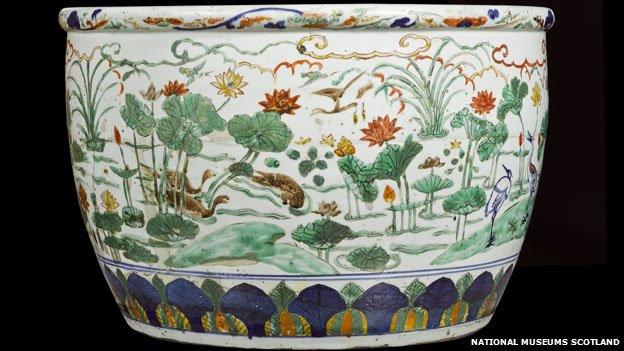
Important items from National Museums Scotland's own collections complement treasures from the Nanjing Museum.
Exceptional pieces of lacquer, porcelain and furniture will be displayed, alongside an incredibly rare imperial fish vat with a design of two imperial dragons chasing a flaming pearl.